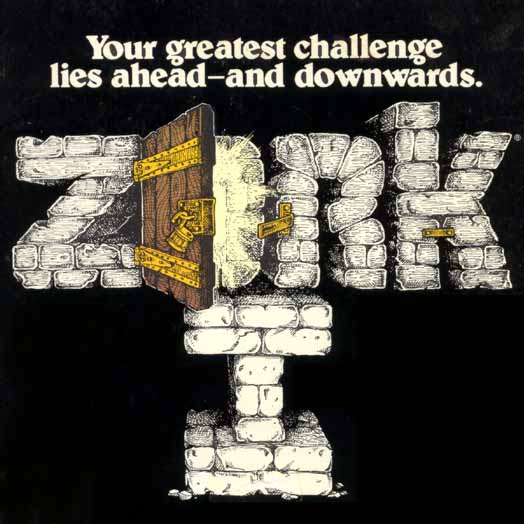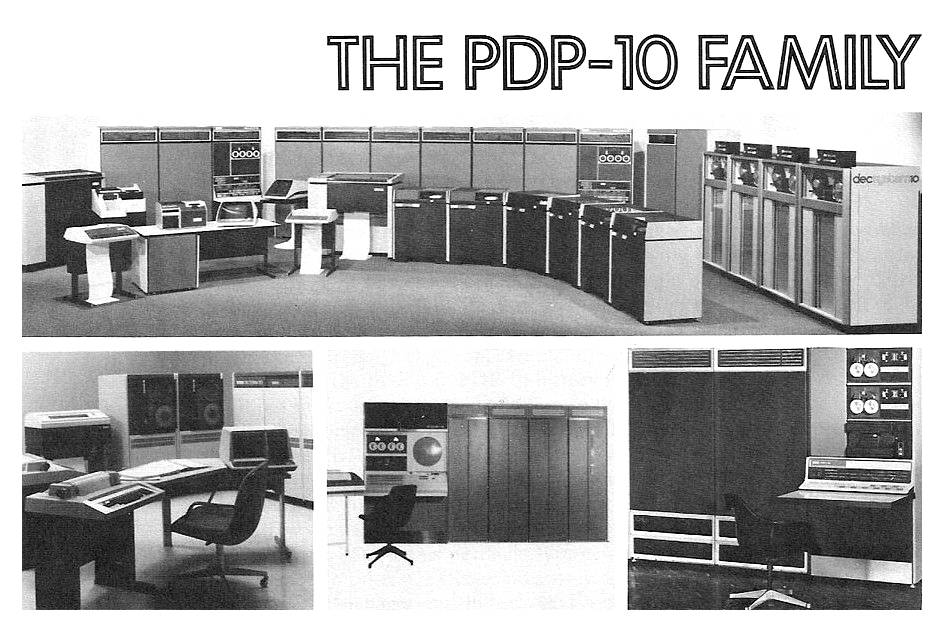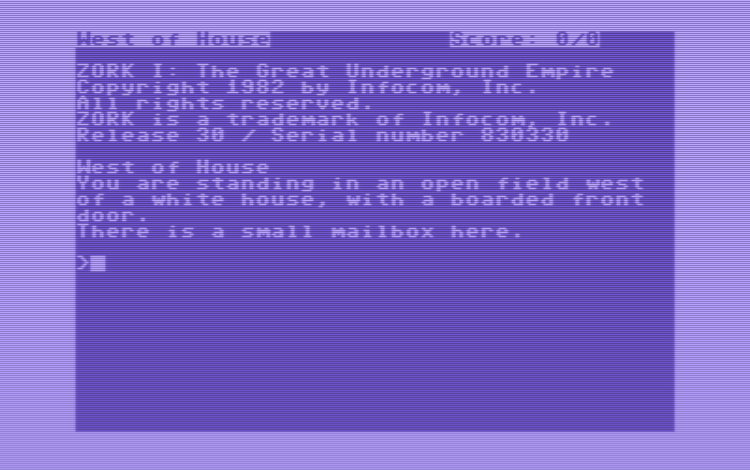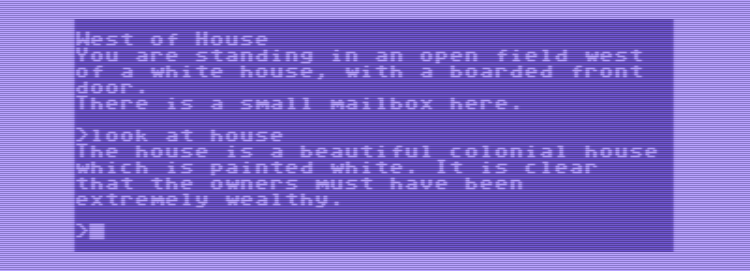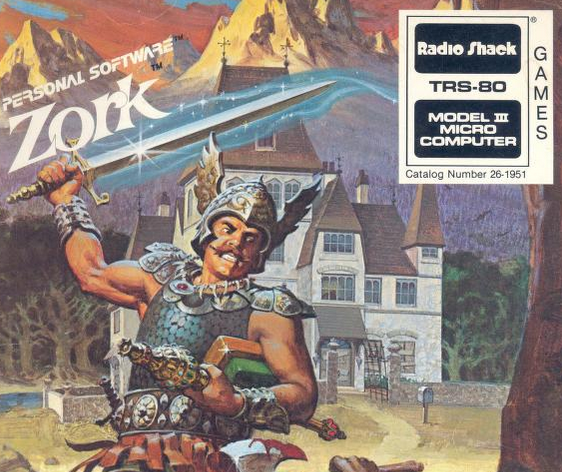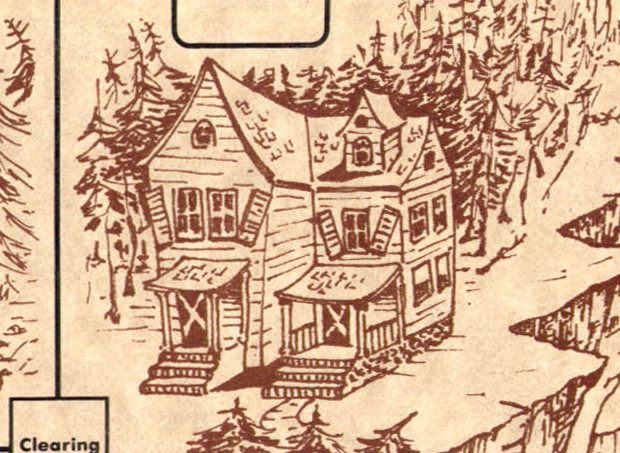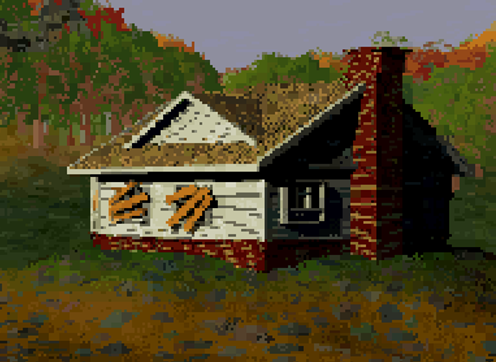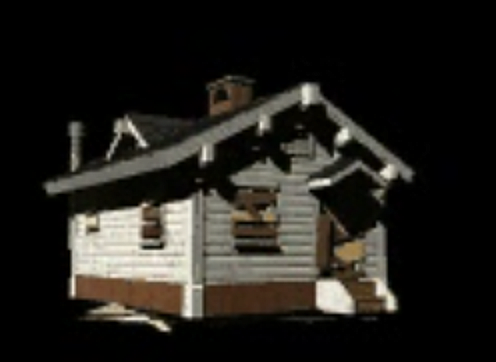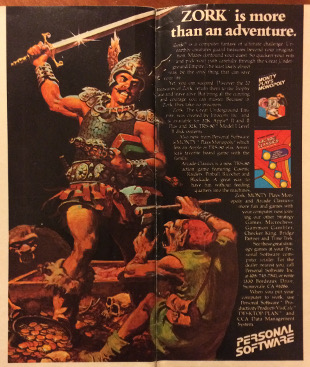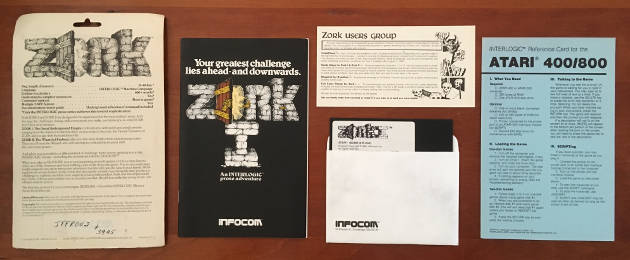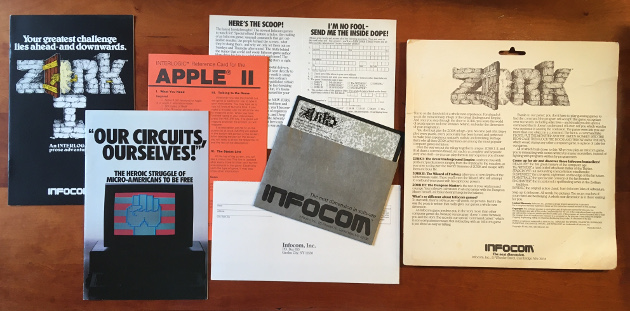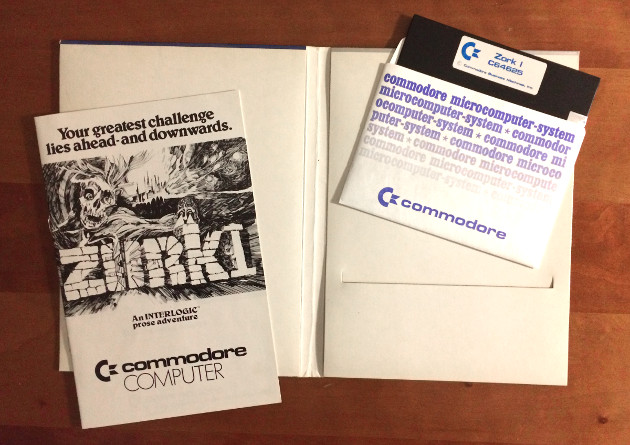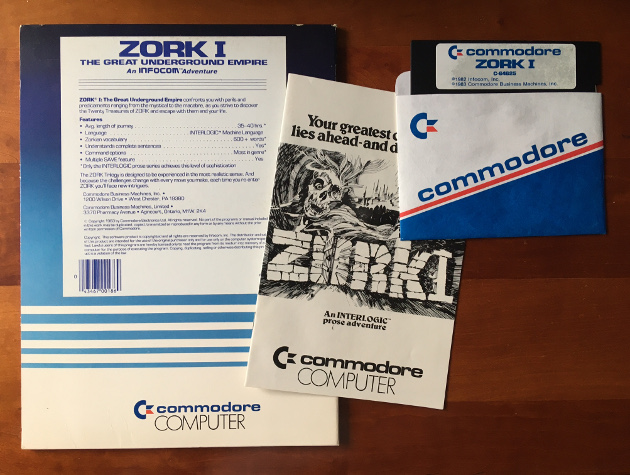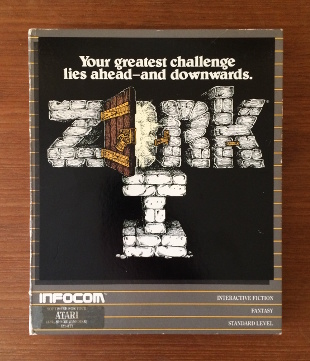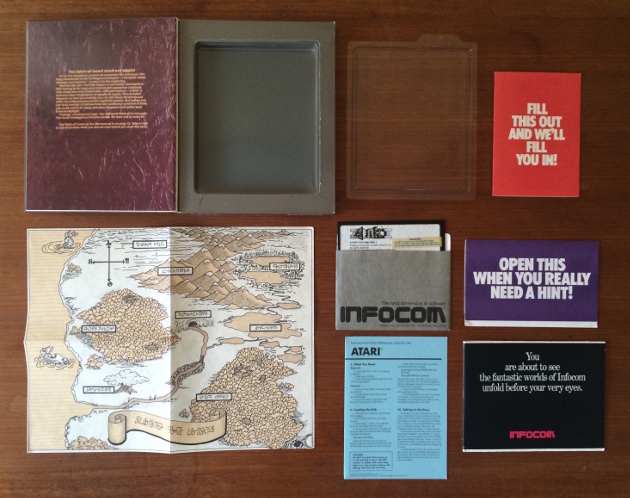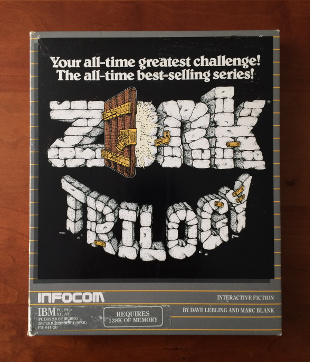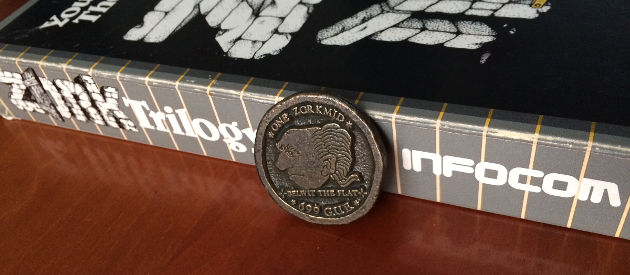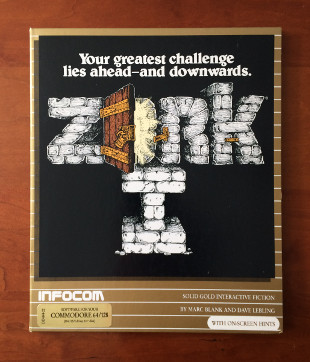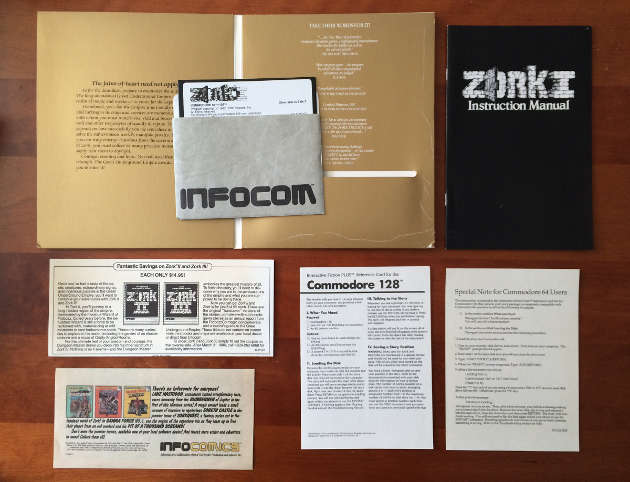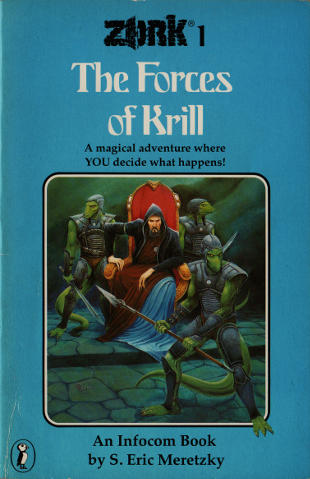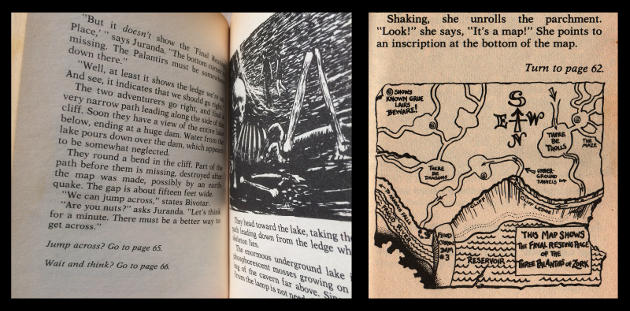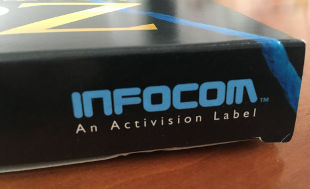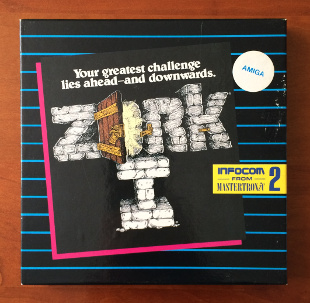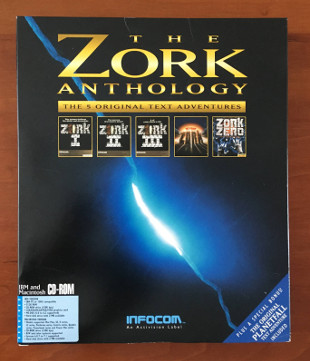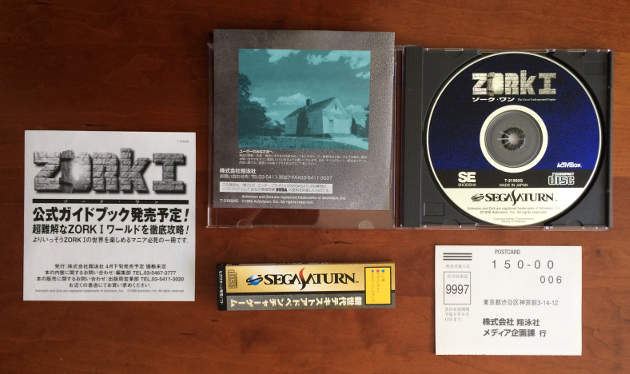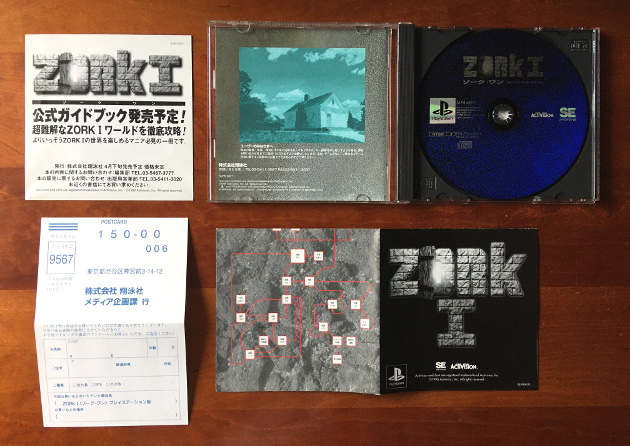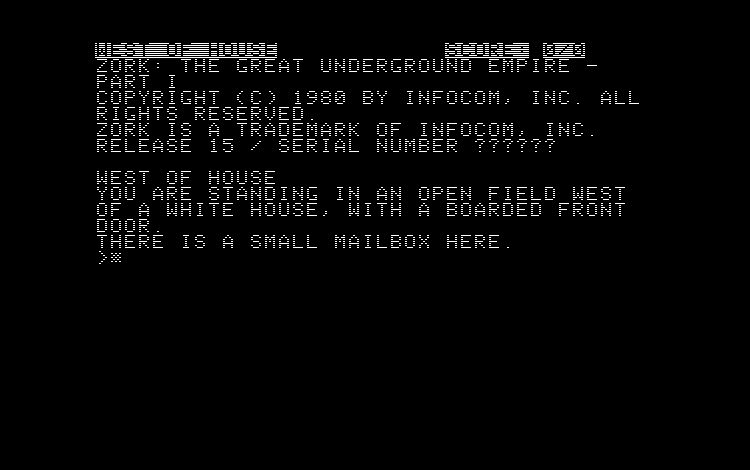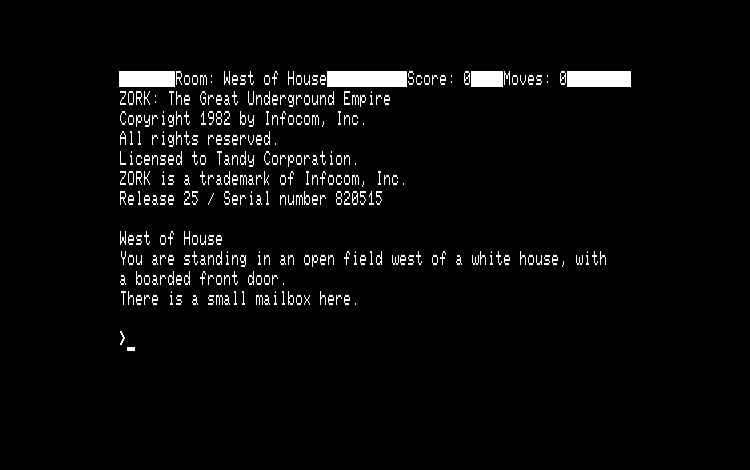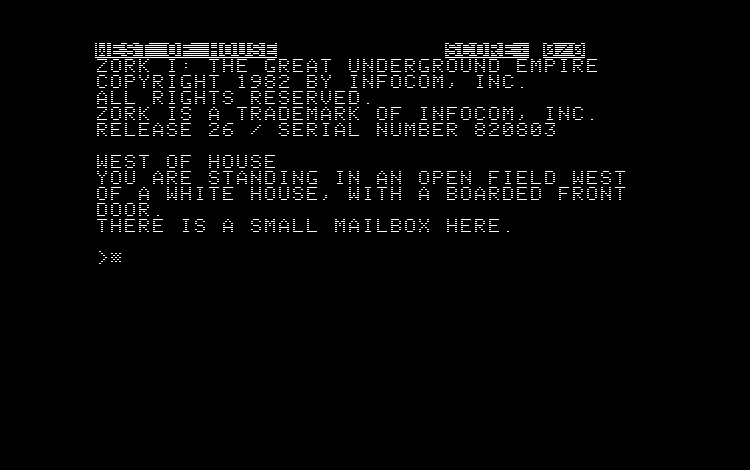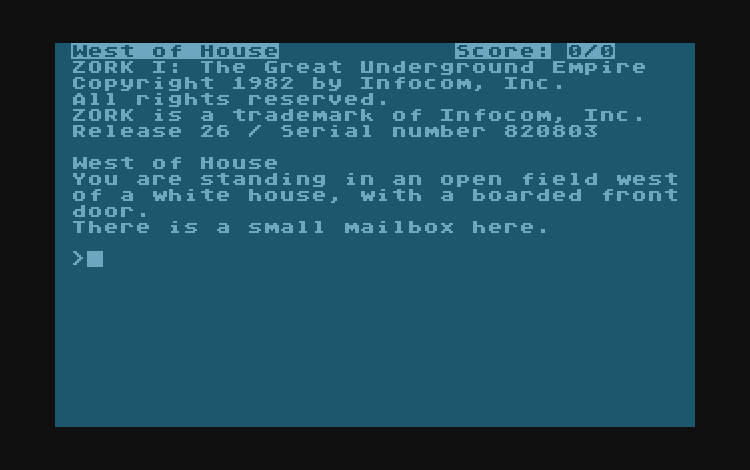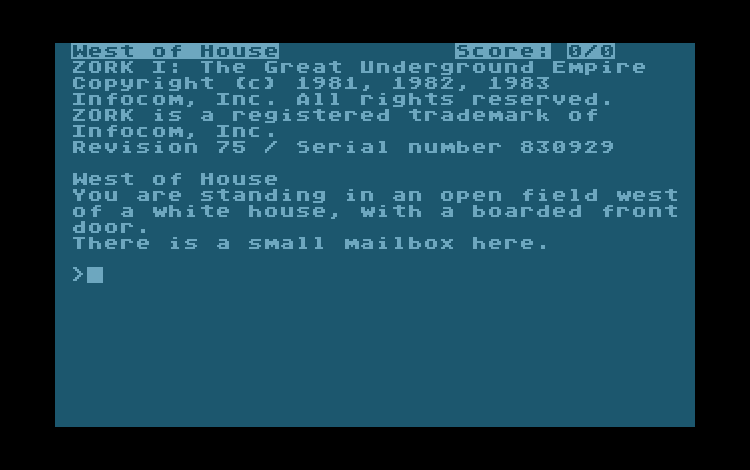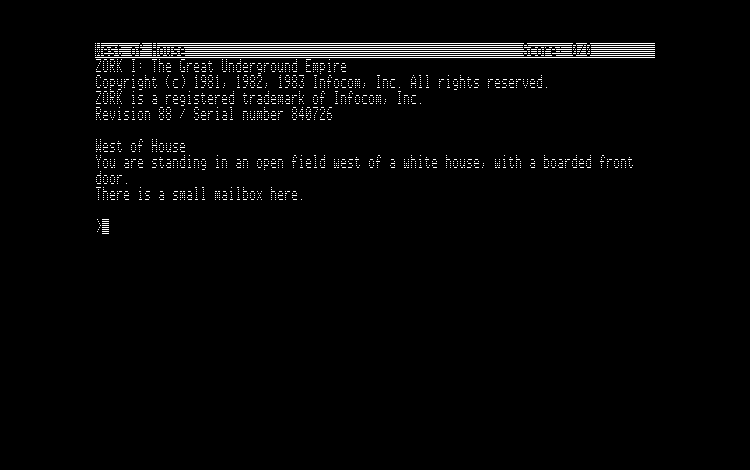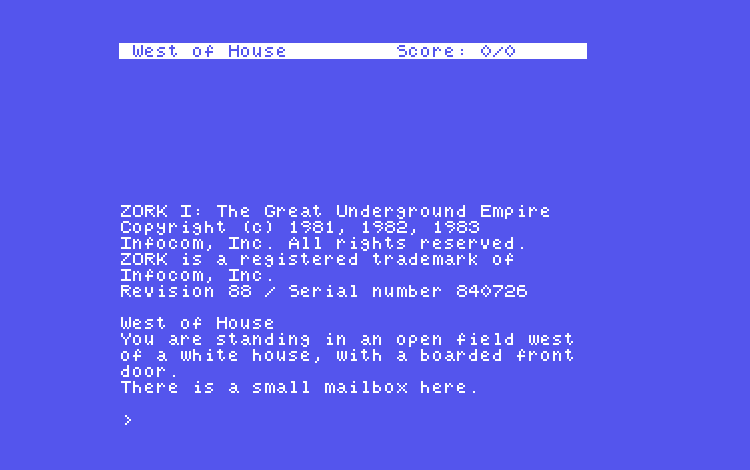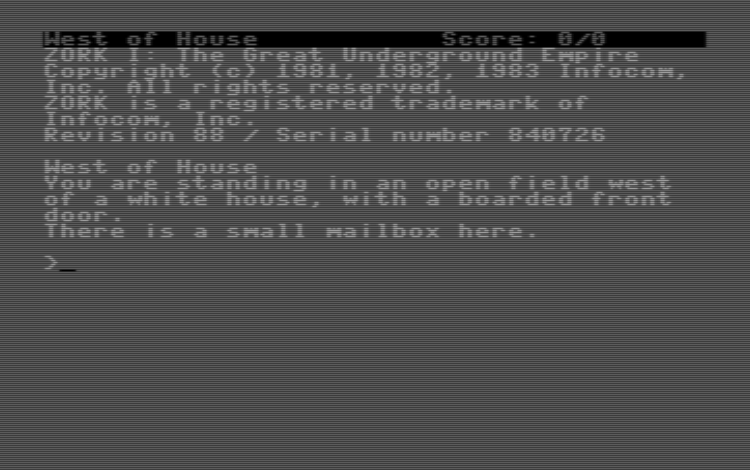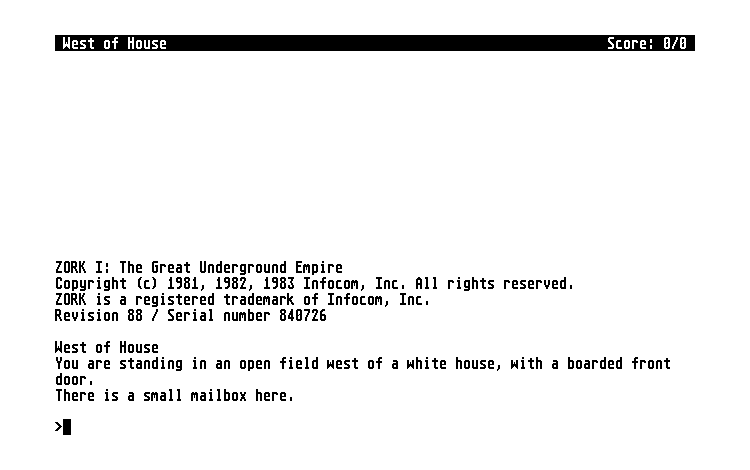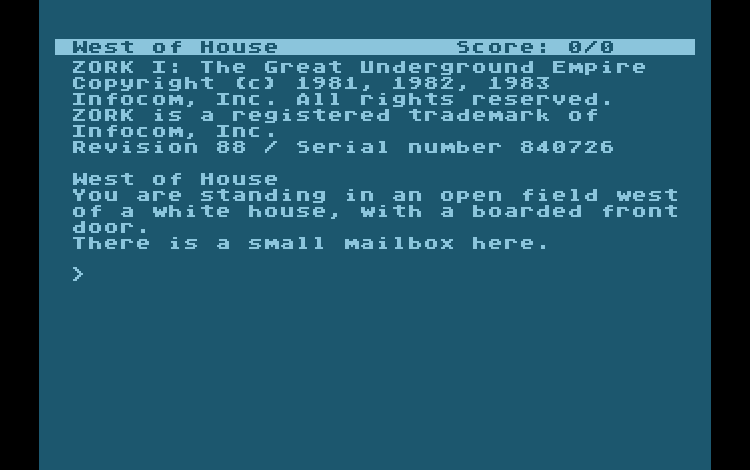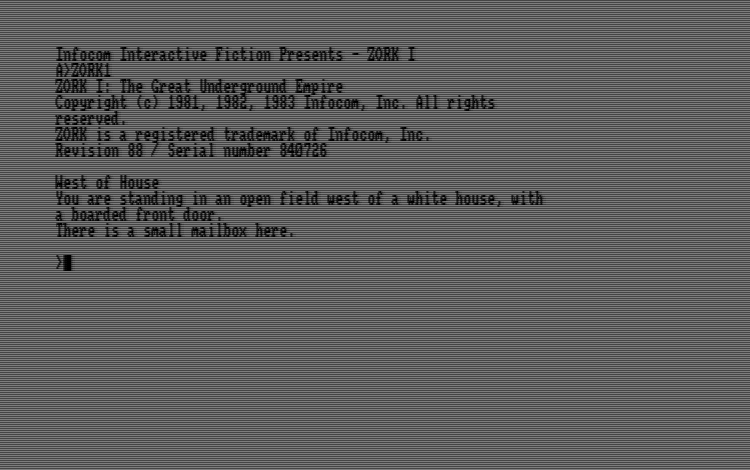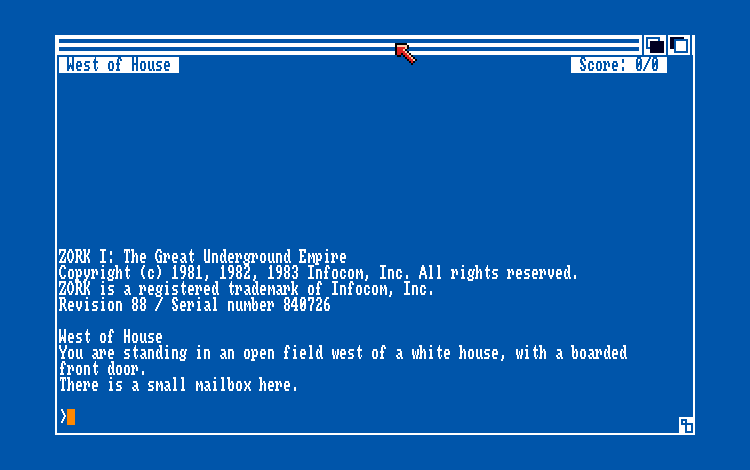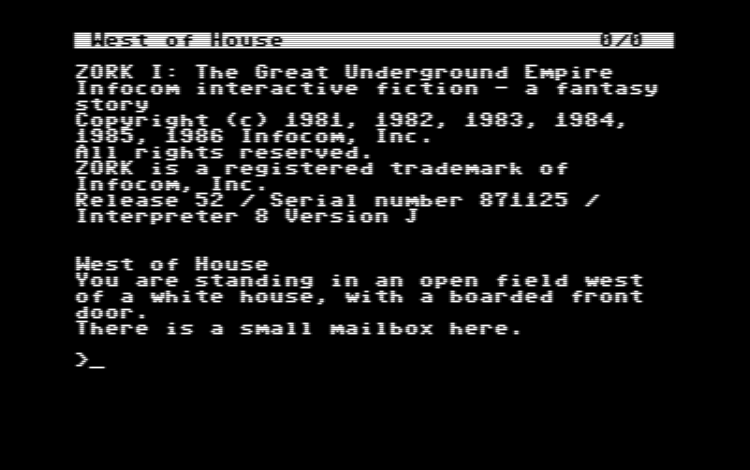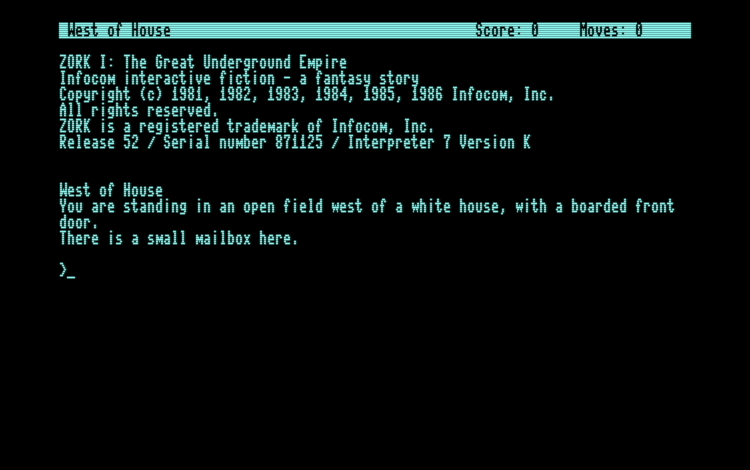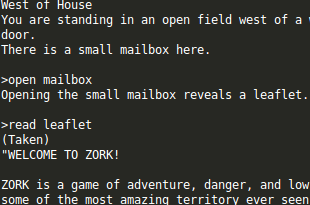
|
||||||||||||||||||
|
Retrogaming |
Aspects of Zork I
Contents
A brief history of the development of Zork A brief history of the development of ZorkThe first version of Zork was written in the late seventies on a Digital PDP-10 mainframe at MIT by Tim Anderson, Marc Blank, Bruce Daniels, and Dave Lebling of the Dynamic Modeling Group. As related by Lebling, the inspiration to write their adventure game came from the appearance of Crowther and Woods' Colossal Cave Adventure on mainframes on the ARPANET (famously halting all work for two weeks while everyone was playing Cave).
Development of the original Zork was done in MDL, a descendant of LISP that was developed at the Dynamic Modeling Group. Eventually the game's parser could understand more complex sentences than Colossal Cave's could (the latter was limited to commands of one or two words, and considered the first five characters of each word only), the game was renamed to Dungeon and renamed back to Zork, a creature called "grue" was introduced, and many puzzles were invented. Members of the faculty founded Infocom in 1979, originally as a company that could produce any kind of software (for an interesting story see the documentary Get Lamp by Jason Scott). Seemingly for convenience, Zork was the first title to be published, as it already was a finished product. However, as it had been developed on a PDP-10 and had naturally grown to fit the resources available on the mainframe, Zork would not fit on the the much smaller microcomputers of the day that consumers would have at home, such as the Apple II or the Tandy TRS-80. For this reason the game was split into three parts (Zorks I, II, and III), each representing a part of the original Zork world. Also, an early type of virtual machine called the "Z-machine" was developed that would interpret compact and portable game code written in a specialized language. Zork and later Infocom games were (re)written in this language, called ZIL (Zork Implementation Language). To have the game work on a particular machine, it needed to run a Z-machine (or ZIP - Zork Interpreter Program), and the game code to be run by the Z-machine. Eventually ZIPs came out for more than 20 different computer platforms during Infocom's lifetime. Playing the gameThe first time I met Zork I was as a budget version for the Commodore 64, published in 1983 by Commodore according to the blurb on the back of the simple folder that serves as packaging. When loaded, the game confronts the player by presenting itself in vanilla C64 Basic 2.0 aesthetics: forty columns, twenty-five lines of light-blue-on-dark-blue text. The BASIC screen editor is still present here, judging from the fact that the cursor and clr/home keys work (and may confuse the parser when used).
At the start of the game the player is placed in front of a large colonial house situated in a forest, but like the subtitle of the game indicates - Your greatest challenge lies ahead - and downwards - the work is mostly found subterranean. The user guide tells us that "Zork I: The Great Underground Empire confronts you with perils and predicaments ranging from the mystical to the macabre, as you strive to discover the Twenty Treasures of ZORK and escape with them and your life!" That's all the background story the player is given in the short booklet accompanying the earlier versions of Zork I (although there is mention of unfriendly beings in the labyrinth and that you will therefore need a weapon). Zork I is a 350-points, 20-treasures cave crawl. The rest of the manual is concerned with explaining the concepts of playing text adventures. The way to the underground world is not very difficult to find, and locating the first treasures is a relatively smooth affair. These must then be brought back to the surface and placed in a trophy case in order to obtain all associated points. To do so initially requires a somewhat tedious procedure, involving a constricted one-way passage through which the player can bring not more than two inventory items. The player may however find another route as he continues his survey of the Great Underground Empire. He will also sooner or later encounter his main adversary, the thief. This sinister person is a wandering inhabitant of the caves and underground passages and will purloin items from the player when encountered. Collected treasures, weapons, or perhaps the essential light source, nothing seems to be safe. His arrival is sudden and he cannot initially be neutralized. Zork I shows its nondeterministic nature here; that is to say that it is not certain what the outcome will be of a hostile confrontation between the player and other creatures. Take the (minor spoiler) confrontation with the troll for example. This role-playing aspect is not always used in other works of interactive fiction and requires the player to "save, and save often." Notably the thief (stealing or fighting) has an unpredictable effect on the prospects of winning the game and with today's player's sensibilities might be regarded as an irritant. Like many early text games, the business of solving Zork's puzzles doesn't take place in the context of a story that unfolds as the player progresses. There are however elements in the description of the environment that give some insight in the geographical situation of the Great Underground Empire, such as Flood Control Dam #3, the Flathead mountains, the Frigid river streaming along the White Cliffs, and other landmarks. These and the history of the GUE are only properly put in order in the background information provided by the material in the Grey Box Zork I package, and further elaborated upon in the later Zork installments and the Enchanter trilogy. The Zork Compendium, hosted at the Zork Library, holds a frankly astonishing amount of information gathered from these and other sources. The White HouseThe starting location of Zork I is in an "open field west of a white house." Despite — or perhaps thanks to — this now famous phrase, there is some unclarity concerning the white house itself. In the game itself, "examine house" gives some information about what kind of building we're dealing with.
The description of that building is clearly followed in the artwork accompanying the first release of the game for TRS-80, also known as "Barbarian Zork". It shows a stately mansion that is congruent with the remark about its owners' wealth.
But then the perception changes. Subsequent artwork always seems to portray the house as a much smaller construction, as a hovel perhaps, or a cabin. This is at odds with the description of the exterior mentioned above, but it might be a better match to the limited number of rooms that appear to exist in the house, being just the kitchen, the living room, and the attic. Below are some depictions of this poorer man's version of the white house from a hint sheet and some later games that feature this iconic structure (in low resolution as these are made in the early days of graphical adventures).
Publication overview and some notes for collectorsThe publication history of Zork is long and varied. Following below is a enumeration of different guises in which the venerable game has been seen in shops, with some pictures of items in my own collection. Zork came out in a somewhat larger number of different packagings than is normal for a software product that goes through the usual premium—budget—anthology—shovelware cycle. This is possibly the result of the development of Infocom's product line and packaging evolution itself. After the company's demise, the owner of the rights to the Infocom's library, Activision, capitalized on the former's geeky and almost mythical status by publishing a number of anthologies (Lost Treasures, Masterpieces, and the various "Collections"). Has any game received such diverse packaging? (For more detailed information, the Infocom Fact Sheet holds an impressive amount of information about Zork and other Infocom releases over the years.) "Barbarian" Zork by Personal Software This difficult to find and coveted incarnation came out for Tandy TRS-80 in 1980, and was sold in a so-called "baggie" - a zip-loc plastic bag - with a 5.25" floppy disk and a manual (printed in the Radio Shack TRS-80 style with the logo on the front, as it was licensed to the Tandy corporation). One year later, an Apple II version was introduced, this time in a proper cardboard box but with the same artwork. The story file is is possibly release 15, at least the Apple II version. Blister packaging 
By 1982 and the time Zork II was to be published, Infocom had taken over the marketing and packaging of their own software. A new low-cost format was introduced: the shop-friendly blister package. A cardboard back and a plastic transparent front, between which a disk and a manual is placed. There were two variants: a larger square package (which could also hold an 8 inch floppy disk) and a smaller rectangular package. The game could not be opened without breaking the package. The manual is quite brief and only a very short description of the game's aim is given, along with instructions for playing a text adventure. The text on the cardboard back shows interesting variations along the several editions of this format, showing the small but growing catalogue of Infocom software. Apart from Zork II and Zork III, no other Infocom titles came out in this form.
Less difficult to find than Barbarian Zork, and significantly lower in price (but still rather costly). The cardboard back and plastic cover are likely to be quite fragile and/or damaged nearly 40 years. Came out at least for Atari 8-bit and Apple II, and likely others. The rectangular version depicted below appears to be a relatively early version; the back lists Zork I, Zork II, and Deadline (Zork III was to follow thereafter). A brochure for the Zork User's Group was included.
The square variant shown below is published a little later. Notably, the diskette sleeve is of the design used in subsequent years, the cardboard back lists a good number of later games (up to Infidel, which means that we are still in the "folio" era), and the promotional material is more developed as well - the Zork Users Group has by this time been absorbed by Infocom. Commodore repackaging 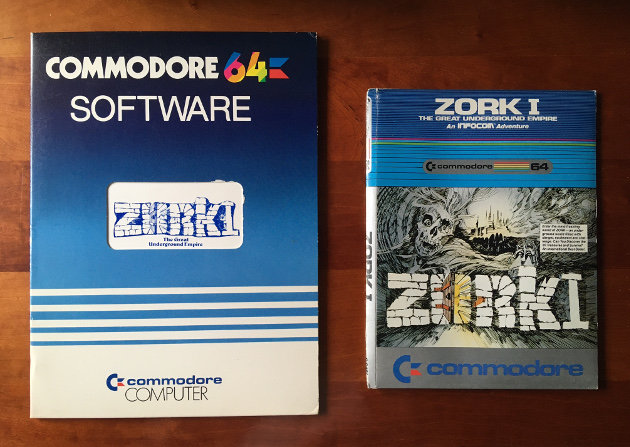
Commodore Business Machines marketed their own repackaging of Zork I and a number of other early Infocom titles. There were two major variations: one a large cardboard folder titled "Commodore 64 Software" with the title of the game, and the other a smaller and flimsier folder that shows a rather ghoulish interpretation of unspecified scene of the game. It is not clear why these two different designs were published. The manuals included in both versions are identical and contain the same information as the one accompanying the blister package editions. The smaller variant is frequently found on auction sites and is usually the least expensive one overall. Both bring you release 30 and came out in 1983.
Grey box This is the edition to get if you would have only one in your collection. It seems to have appeared in 1984 and involves release 88 of the game. Not altogether uncommon, which is not surprising considering the success Infocom had with this title by this time. It's also the box format that saw the widest range of supported systems. The Zork Trilogy grey box This coin was originally intended to be included with Zork I, but manufacturing issues interfered (the coin is shown in the illustration on the back of the Zork I box though) and it eventually ended up in the Trilogy. Note: Make sure you get the right Zork Trilogy - in the grey box - and that the coin is actually present. Solid Gold edition
The Forces of Krill "choose your own adventure" book
The books are not very difficult to find, and mostly of interest to Zork completionists. Of note however is one of the illustrations in the book, a map of the area south of Flood Control Dam #3 (see below on the right).
The Activision Era
Mastertronic repackaging
The Zork Anthology 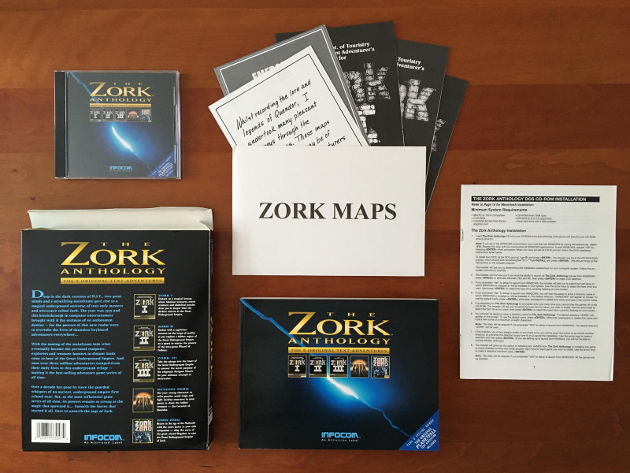 Contents of the Zork Anthology compilation; the example above being the CD-ROM version for both MS-DOS and MacOS. Clockwise from top left: a CD containing the games, maps, an installation manual, and a big manual for each of the six included titles, and the back of the box. Sega Saturn Zork I
In 1996 a different implementation of Zork I was published in Japan for the Sega Saturn and the Sony Playstation consoles. There is no mention of Infocom on the box, only Zork I and Activision, but in the manual Marc Blank and Dave Lebling are listed as the original authors. These version featured limited graphics and music, and presumably the player controls his character using a menu-driven interface. This CD is not at all hard to find, but some collectors will want to make sure that the spine card is included -- a staple of Japanese content on optical media. Interestingly, the Playstation version included a map, while the Saturn edition did not.
Zork witnessed the rise and decline of many computer platforms. As may be expected from a game that gained popularity in the early age of home computing with its great diversity of systems, Zork I - or rather the virtual machine in which it existed - was ported to many platforms. A capable system sporting at least 32kiB of RAM and a disk drive had a good chance of being able to run Zork, and below is an illustration of this; the opening screens of Zork I on various 1980's computers. Note the progressing version numbers; Zork was being improved during its lifetime, as is evidenced here.
Maps and solution (spoiler alert!)Below you will find my own map and walkthrough for Zork I. Plenty of people have made these things already, of course, and long ago too, such as the map issued by the Zork Users Group. Nevertheless I think it is simply part of the interactive fiction experience to draw your own. The writing of a walkthrough is probably not normally part of a game; let's say that I simply like to document this sort of things, a tendency not dissimilar to keeping the banknotes in my wallet ordered by serial number.
Some topographical magic has not been made explicit in this map: the connection between the Treasure Room and the Temple, the "prayer" link from the Temple to the surface, and the link between the two Mirror Rooms. As mentioned earlier, the thief is a primary adversary in Zork I. He can easily ruin the player's chances of finishing the game, but at the same time it is not possible to reach the end without him. At any rate it would be best if he could be avoided in the early stages of the game. Unix Frotz is a respected interpreter for Infocom and Inform games that offers a number of debugging options that can be set before running. The -o switch allows you to follow object movement. Using this it is possible to construct an itinerary of the thief (and be amazed by his erratic jumps and geographical antics). Perhaps there are even some safe spots on the map, just like there are in Pacman. Links
Read about Mini-Zork, an obscure and smaller version, here, and about the mainframe version of Zork here. (Originally written 2017/03/24)
|
